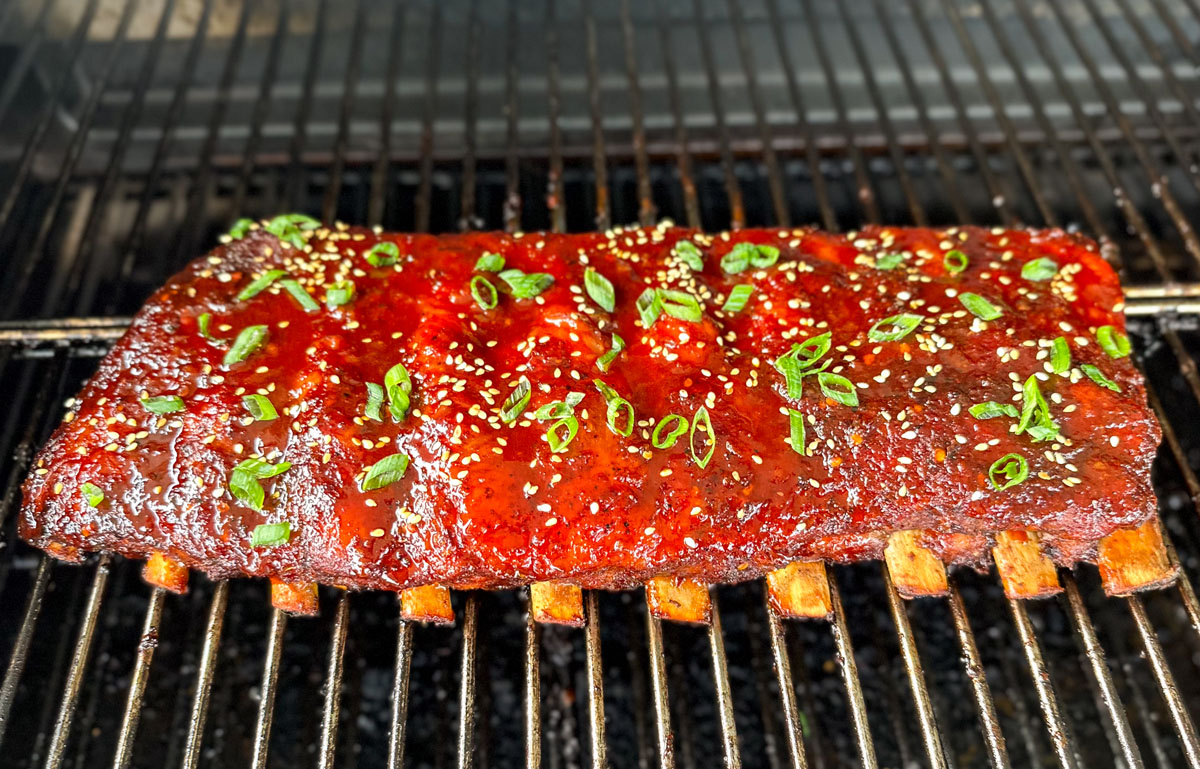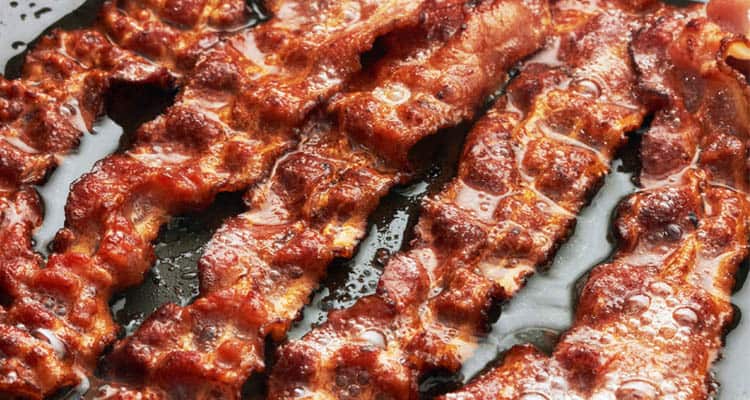Everything You Need to Know About Boston Butts

What is Boston Butt?
If you are planning to make pulled pork, you’ll most likely be on the hunt for a cut of meat known as the “Boston butt”. This is what most recipes will recommend you use.
However, there is confusion about what exactly a Boston butt is. Depending on where you live, it may be called something else. And to make matters worse, a Boston butt has nothing to do with the rear end of the pig at all.
So let’s clear this up, so you can buy your butts with confidence from here on in.
What exactly is a Boston Butt?
A Boston butt comes from the shoulder of the pig, the meaty part closest to the spine. Sometimes, this same cut of meat is known as the “pork butt”.
When you look for it in the shop, it will be rectangular in shape, and sometimes part of the bone will still be in the meat.
This video from BBQGuys explains how to tell the difference between different types of pork roasts.
It is up to you whether you buy it with the bone in or out. Some like Boston butts with the bone in, as the extraction of the bone leaves the cut a little wonky and can lead to some uneven cooking.
The bone also acts as a natural thermometer. When it slides out without any effort, your butt is ready to pull.
There are a couple of theories about where the word ‘butt’ in pork butt actually comes from. Some say that it refers to the fact that it comes from the thicker part of the shoulder, with more muscle and fat. Others say it is because the shoulder butts were packed for shipping in barrels known as butts.
The pork butt is also called the Boston butt as it was in the city of Boston that this cut of meat was first prepared, packed, stored and shipped. It is also said that the butchers of Boston had a distinctive way of cutting the meat that led to it being known as the Boston butt all over the country.
Butt… What About the Rear End of the Pig?
Now that we know that a pork butt and Boston butt are the same thing, and that they come from the shoulder, let’s address the actual butt, as in the rear end.
This rump end of a pig is actually where the ham comes from. More specifically, a ham is from the thigh and the glutes. The butt butt. It’s easy to see why, then, hams are so meaty.
Why is Shoulder Meat used for Pulled Pork?
If the ham is so meaty, you might be wondering why it isn’t the perfect meat for pulled pork.
The secret lies in all the fat and collagen in the shoulder meat. When this material breaks down through the cooking process, the result is tender, melt in your mouth meat.
Pork Butt vs Pork Shoulder
You may still be wondering about the difference between pork butt and pork shoulder. If the butt is from the shoulder, where is the shoulder from? Well, it is also from the shoulder. But the thinner, lower part.

Also known as the ‘picnic shoulder’, this cut will look conical in shape, and will have the bones in. It will sometimes have the skin left on too.
Some pitmasters like to use the picnic shoulder for their pulled pork. While it is up to you at the end of the day, there a couple of things that could make it a little trickier to work with.
The skin needs to be removed as it will not form a bark. So that is another step you need to worry about when preparing the meat.
Also, the odd conical shape of the cut can make cooking it evenly a bit of a challenge.
If you have a plan of attack to deal with these issues, then feel free to try out the picnic shoulder as well!
The Money Muscle
The so called “money muscle” is a part of the pork butt named after it’s abilities to win at barbecue competitions.
It’s extremely tender and marbled with fat that renders down during a long cook.
The money muscle is part of the loin, and is located high on the shoulder. Because it doesn’t get worked as hard by the hog it’s more tender.
This video does an excellent job showing you how to locate the money muscle.
Best Alternative Cuts for Pulled Pork
In some areas, sourcing Boston butt is tricky. Some pitmasters will try making their pulled pork with a tenderloin or a fresh ham. If you do need to find a substitute for pulled pork, we wouldn’t recommend either of those options.
In most cases the reason your pulled pork comes out dry is because you used the wrong type of cut.
In particular, tenderloins will dry out quickly when cooked, and can end up being a rubbery mess.
The best type of pork for pulled pork has lots of fat and collagen that can break down during the long cooking process. Cuts of meat from the shoulder will be your best bet. The leg or shank is also a good option.
If you are having trouble finding a Boston butt on the shelf, try asking your local butcher, even the one at the supermarket. You never know what they might be able to source for you.
How Much Pork Butt Per Person?
This is where things start to get really technical. Of course you don’t want to run out of pulled pork if you are feeding a stack of people, but how do you work out how much you need?
The first thing you need to remember is shrinkage. An average Boston butt will shrink by about 30% over the cook. If your butt is really fatty, then it could shrink up to 50%.
Now we need to take into account how many people you will be having over. As a rule of thumb, teenagers will eat about the same amount as adults, and women often eat less than men. Kids generally only eat a small amount.
The safest approach is to take into account your guests individually, however, as I know plenty of women who can eat just as much as a man!
Now let’s go back to school.
- B – number of big eaters
- S – number of small eaters
- U – size of uncooked Boston butt needed (in pounds)
The formula is as follows:
U = ((2B + S)/2) + 1
Let’s imagine you have 3 big eaters, 2 small eaters.
U= ((2 x 3 + 2) / 2) + 1
U= ((6 + 2) / 2) + 1
U= (8 / 2) + 1
U= 4 + 1
U= 5
I now have a headache, but I do know that I would need a 5 pound uncooked butt to feed everyone.
If you are serving up your pulled pork on sandwiches, you’ll need about ¼ of a pound of pulled pork (cooked) per sandwich. A big eater would probably eat two sandwiches, whereas a small eater would eat one.
Remember that this method works out the amount of cooked pork you need (which has shrunk by about 30%), so the raw chunk of pork you buy will need to be slightly heavier.
How To Cook Pork Butt
Boston butt is best cooked low and slow. Popular ways to prepare this cut of meat are stewing, barbecuing, braising, or preparing in a slow cooker. Perhaps the most talked about way to cook pork butt is to make pulled pork.
Preparing pulled pork is a great introduction to cooking low and slow. If you would like an in-depth description of how to go about it, check out this guide to smoking your first pork butt, which has all the details you need.

In general, here are some tips to remember when smoking a pork butt:
Preparation:
- A Boston butt will not need much preparation as far as trimming and cutting goes.
- Apply a binding agent, such as mustard, before applying a rub. This is not for flavor, but rather to help the rub stick
- Apply the rub just before you put the butt in the smoker, and don’t go too crazy with the amount of rub. It is more important to make sure it is applied evenly.
Cooking:
- You will be cooking at 225 – 235°F for around 10 hours. Place the butt in the center of the smoker. Pecan and cherry are good smoking woods for pork butt.
- Using a probe thermometer is the best way to monitor the internal temperature of your meat.
- Let the bark build up for about half the cooking time, then wrap the pork butt in aluminium foil. The internal temperature of the meat should be at about 160°F at this point.
- After the meat is wrapped, put it back in the cooker (with the thermometer back in place) and cook for roughly another 4 hours, or until the meat’s internal temp reaches around 195°F.
General tips:
- Let the butt rest for at least 30 minutes once it is done. You can even use a faux cambro to rest and keep your butt warm for hours before you need to serve it.
- Always keep safety and hygiene in mind by wearing heat resistant gloves, and be mindful of cross contamination.
- Don’t rush the process. Having a couple of beers at the ready might keep you busy while you wait.
You could also mix it up and make pork butt burnt ends.
Wrapping it up
Knowing what cuts of meat you are dealing with and what they are best suited for, is just one of the many secrets to pulling off some amazing meals cooked low and slow.
Granted, the terms pork butt or Boston butt are confusing. But now that we are clear that the butt does not mean the rear end, you can head into your local butcher with confidence; knowing know what you are after, where it comes from and most importantly how to cook it well.
Have you ever made some amazing pulled pork? If you have any tips you would like to share, or questions you would like to ask, be sure to let us know in the comments section below. And if you enjoyed the article, please be sure to share!







